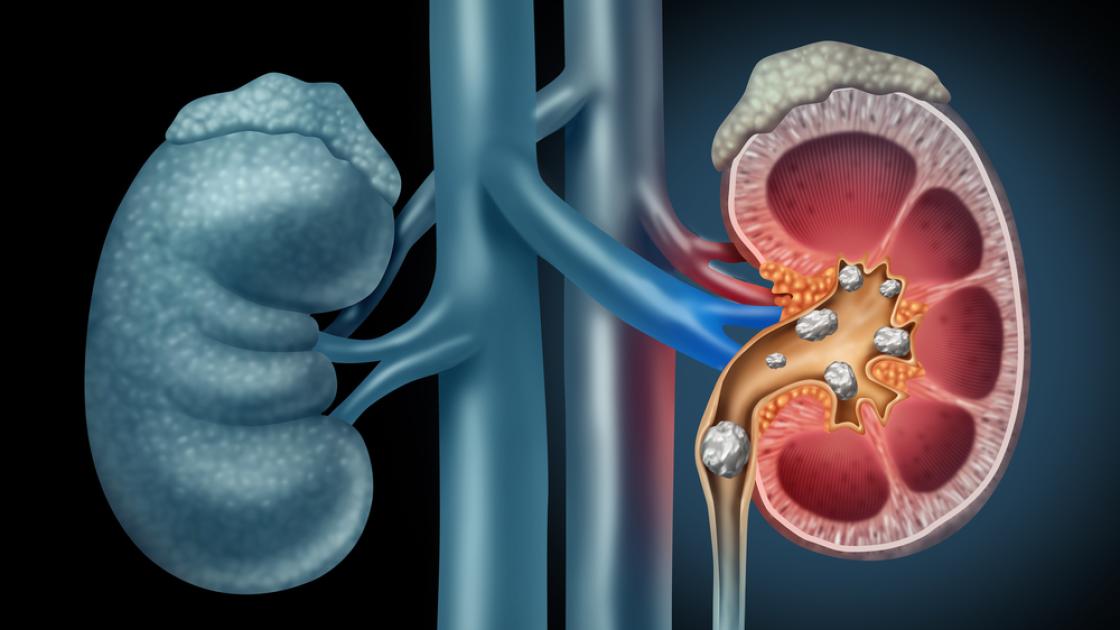
Seasonal kidney stones are real, and other renal insights
Kidney stones are small, pebble-like deposits made of salts and minerals that form inside the kidneys. Sometimes called nephrolithiasis or urolithiasis, these irritants are more common than you might think, affecting about 11 percent of men and 6 percent of women in the United States at least once in their lifetime, according to the National Institute of Diabetes and Digestive and Kidney Diseases (NIDDK).
Did you know that kidney stones are actually more prevalent during certain times of the year? Keep reading to find out why and to learn what you should do if you think you or a loved one starts having kidney stone signs and symptoms.
Kidney stones: who's at risk?
Kidney stones are usually the size of a pea, but can be bigger or smaller. It’s rare, but kidney stones can sometimes grow as large as a golf ball! While anyone can develop kidney stones, they appear more common in people with the following risk factors:
- Male gender
- Advancing age
- Low urinary volume and high urinary concentration (i.e., dehydration)
- Certain dietary patterns, such as a diet high in oxalates (found in things like leafy green veggies), animal protein (e.g., beef, pork, chicken), refined sugar and salt
- Obesity
- A history of gastric bypass surgery
- Digestive conditions like Crohn's Disease or ulcerative colitis
- Family history
- The use of certain medications, as well as calcium and vitamin C supplements
Why kidney stones are more common in the summer and fall
Researchers have discovered that there may actually be a seasonal trend in the development of kidney stones. In fact, the summer and early fall months are sometimes jokingly referred to as "kidney stone season." Here's one reason why:
In most parts of the United States, summer and early fall months are associated with hot, humid weather. Most of us also tend to spend more time outdoors during this time of year. The issue is, spending time in the heat and humidity can cause us to sweat more—and unless we drink enough water to replenish the fluids we lose through sweating, many of us can become dehydrated as a result. Dehydration can then reduce urinary volume and make our urine more concentrated, which we've learned is a leading risk factor for kidney stone formation.
What should we take away from this information? Remember to drink plenty of water! Aim for around 3.7 liters (15.5 cups) of fluid intake per day if you're a man, and 2.7 liters (11.5 cups) per day if you're a woman—but know that the exact amount you need will depend on personal factors like your activity level, health status and yes, even the weather.
What to do if you think you have kidney stones
If you have kidney stones, you probably won't be able to feel them when they are still inside your kidneys. Plus, many kidney stones are small enough to pass (leave your body through your pee) without you noticing. However, if the stones are large enough to become stuck in the ureters (tubes that connect the kidneys and the bladder), you might notice the following signs and symptoms:
- Intense pain, often described as severe or sharp, that is typically felt in the back, sides, lower abdomen and/or groin
- Inability to find a comfortable position
- Pain that comes and goes and fluctuates in severity
- The persistent need to urinate, even in small amounts
- Pain or burning while urinating (dysuria)
- Cloudy, foul-smelling and/or discolored urine that looks red, pink or brown
- Nausea and vomiting
- Fever and chills (if there is an associated infection)
It's important to know that other conditions can mimic kidney stones. Also, if left untreated, kidney stones can lead to complications like urinary tract infections and kidney damage. So, if you have any concerning signs or symptoms, be sure to seek medical attention right away.
Are you worried about kidney stones?
If you have questions about your health or would like to meet with a doctor, contact SIU Medicine. Our team is ready to provide you with the personalized health care you and your loved ones deserve.




